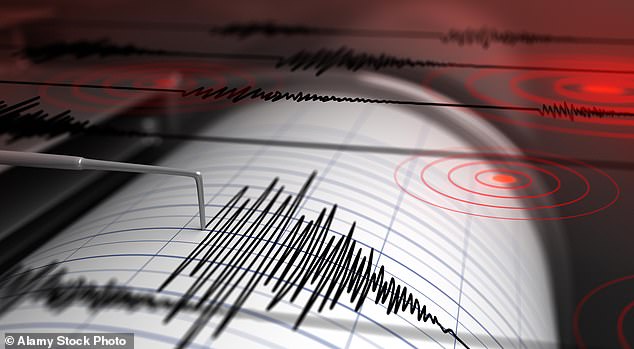New Mexico was rocked by back-to-back earthquakes just five minutes apart.
The US Geological Survey (USGS) reported a 3.6 and 3.1 magnitude quakes beginning at 12:24pm local, with the epicenter less than 10 miles south of Eunice.
The region sits on top of the Alamogordo fault that formed around 30 million years ago.
This ancient fault is part of the Rio Grande Rift, a 600-mile long geological feature stretching from southern Colorado to north Mexico, which is actively widening up to two millimeters a year and causing earthquakes.
It is unknown if the Rio Grande Rift triggered Thursday’s earthquakes.
Eunice is also located in the heart of the Permian Basin, an area experiencing a significant oil and gas boom, including fracking.
Fracking is carried out by blasting large quantities of water, chemicals, and sand into rock formations to crack them open and release the fuels trapped inside.
The extraction process is not usually the direct cause of an earthquake, but the process of disposing wastewater produced through fracking that can trigger tremors.

New Mexico was rocked by back-to-back earthquakes just five minutes apart. The US Geological Survey reported a 3.6 and 3.1 magnitude quakes beginning at 12:24pm local, with the epicenter less than 10 miles south of Eunice
There are several cities surrounding the epicenter that may have felt shaking, including Hobbswith a population of 38,400 and Kermit that is home to 6,400.
Eunice, however, is hope to around 3,100.
The tremors hit at shallow depths, which are felt more strongly than deeper ones as they are closer to the surface.
The Alamogordo fault extends about 68 miles, from south to central New Mexico and marks the boundary between the Tularosa Basin and the Sacramento Mountains uplift.
The back-to-back earthquakes were likely result from natural crustal processes like swarms, stress redistribution or small fault adjustments.
These are common in rift zones and do not usually indicate a major earthquake is imminent—but they do show that the Earth’s crust is always shifting.
The Rio Grande Rift is part of a continental rifting process, where the Earth’s crust is being pulled apart as tectonic forces stretch it.
This rift is formed by the stretching and thinning of the Earth’s lithosphere (the outer shell of the planet), creating a zone of weakness where the crust breaks, faults and sinks.

The region sits on top of the Alamogordo fault that formed around 30 million years ago
Southern New Mexico experienced as powerful 5.4 magnitude tremor on May 4.
The earthquake was located about 35 miles south of Whites City.
The USGS reported it hit 4.6 miles deep and rattled thousands across the region, according to the US Geological Society.
Video taken about 200 miles away in El Paso showed the a street being shaken amid the tremor.
It was followed by two smaller 2.9 magnitude aftershocks, although the USGS warned that more could follow in the coming week.
‘Damaging earthquakes can occur in the future, so remember to: Drop, Cover, and Hold on,’ USGS said on its website.
‘More earthquakes than usual (called aftershocks) will continue to occur near the mainshock.’
No fatalities or damage has been reported from the tremors so far, although more than 1,500 people reported feeling its impact.
This article was originally published by a www.dailymail.co.uk . Read the Original article here. .

